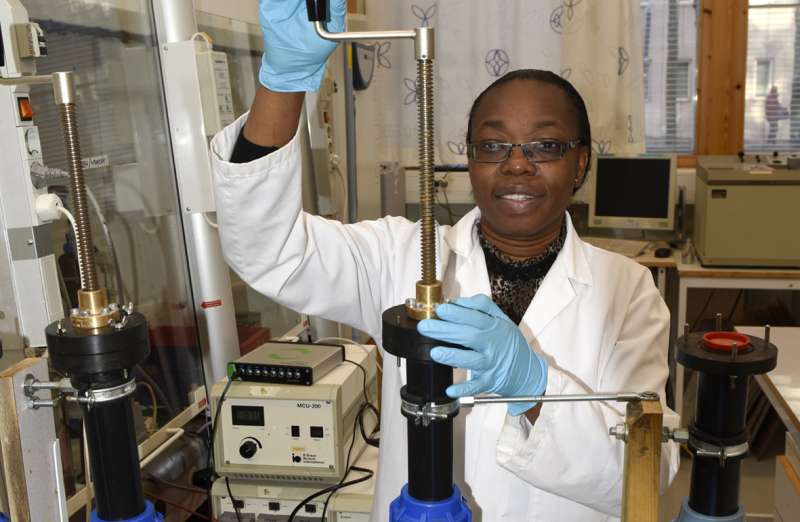Less water beneficial in biogas production

When organic waste is turned into biogas, water is usually an important component of the process. This results in a high water and energy consumption and a lot of residue. Doctoral student Regina Jijoho Patinvoh at the University of Borås, Sweden, has investigated and developed processes for dry digestion of solid waste in two different types of reactors.
Her research results show that a simple reactor of textile materials works well in dry digestion of solid waste, such as chicken feathers, citrus peels, manure, and straw. The microorganisms that break down the waste eventually adapt to the dry material so the process goes faster.
"In another type of reactor, a tube-like plug flow reactor suitable for continuous processes where waste is continuously fed, it is possible to shorten the digestion time as long as you feed the right amount of material", says Regina Jijoho Patinvoh. "I have investigated the limits for the optimal amount of material."
Cost-effective textile reactor suitable for dry digestion
Regina Jijoho Patinvo tells that the textile reactor is developed by the textile company FOV Fabrics AB in collaboration with the University of Borås, and that it is suitable for small-scale production of biogas, for example in developing countries. It looks like a flat, oblong pillow with a completely air and waterproof zipper along its entire length.
"This reactor is small, light, and you don't need expert knowledge to use it. Just feed the waste mixed with a bit of digestion sludge and zip it up. The biogas production will start, causing the reactor to swell up like a balloon. The gas is let out through a hose. When there's no more gas coming out, you take out the residue and feed with more waste."
These types of reactors are usually used for traditional digestion with lots of water, but the fact that it is also suitable for dry digestion is beneficial since the water and energy consumption decreases and the residue becomes lighter.
"This makes it possible for households, neighbourhoods, or societies to extract their own biogas which they can use for running their stove or use as electricity. At the same time, they get rid of a lot of their waste."
The microorganisms breaking down the material are usually accustomed to working in damp environments, but they gradually adapt to the new, drier environment. This is why the process may be slow at first when you use dry materials, but it will speed up once the microorganisms adapt to the dry environment.
Regina Jijoho Patinvoh has mostly used chicken feathers, manure with straw content, and citrus peels, separate and in different mixes. If the materials are stiff, they need to be pre-treated with chemicals, heat, or bacteria. After the digestion, the residue can be used as biological fertilisers.
New reactor for large-scale production
The so-called plug flow reactor was recently developed at the University of Borås and suitable for larger scale of biogas production with a continuous inflow of material, designed to suit dry materials.
There is not much previous research or experience of how a reactor for continuous dry digestion works in a smaller scale or how it could be optimised.
"But now I have tested this reactor and investigated its potential for dry digestion", Regina Jijoho Patinvoh says. "I fed it little by little and tested the limits with the aim of reaching a quick and safe process, in order to find the optimal level of material inflow."
Provided by University of Borås


















